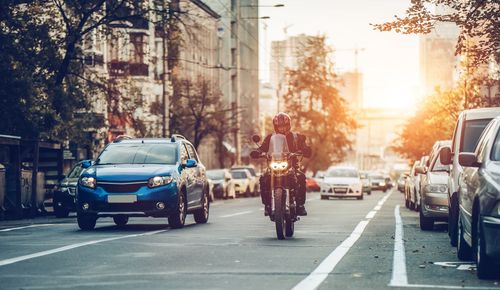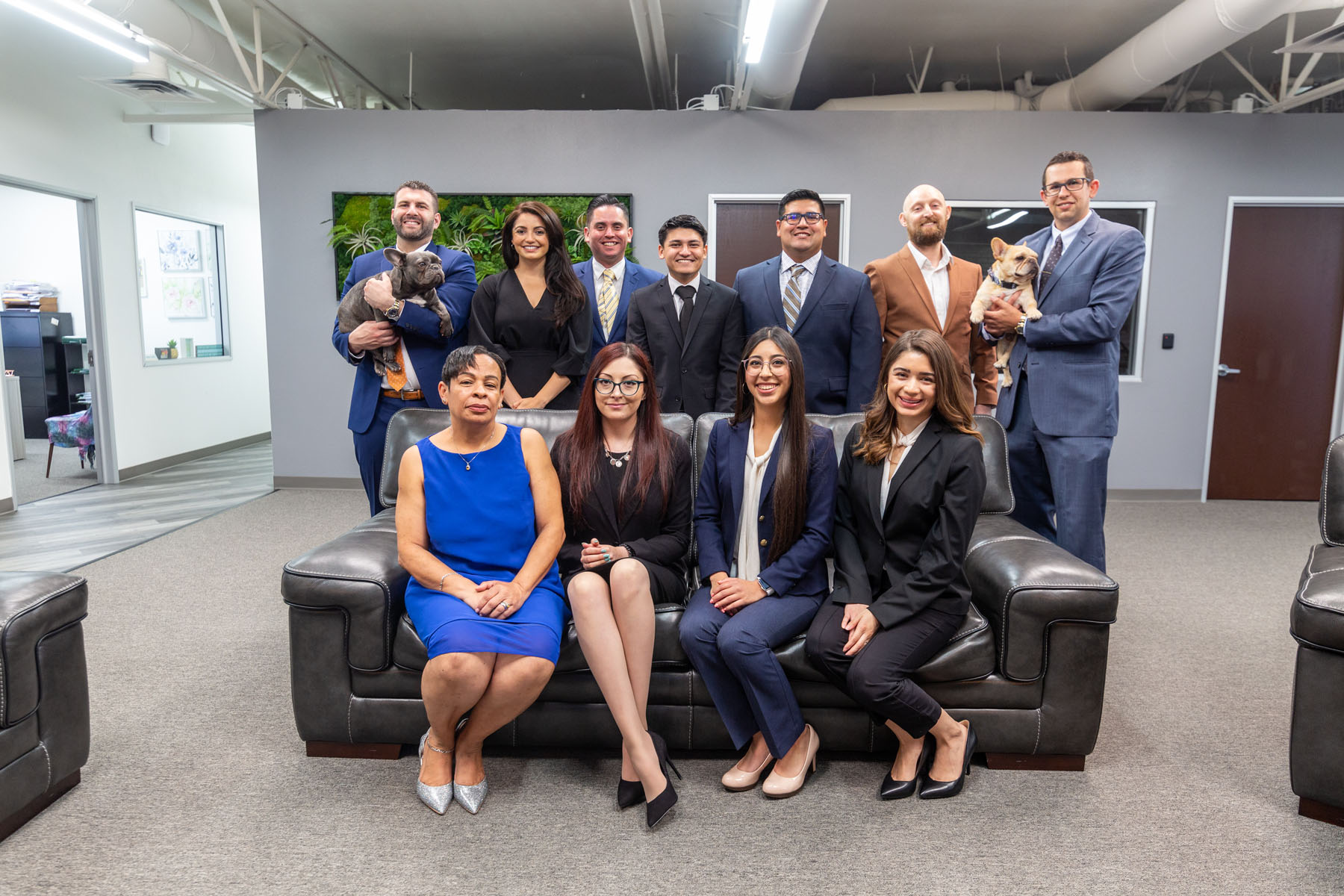Most drivers on the road are insured – it is, after all, illegal to drive without insurance. Still, there are uninsured motorists on the road, which is why you want to make sure uninsured motorist coverage is a part of your auto insurance policy.
Imagine this: you’re driving down the road enjoying the day when your car is hit by another vehicle. After an investigation process, it’s determined that the other driver was at fault in the accident. This should be a simple situation. You make a claim to their insurance provider and your car repairs, any medical costs, and any lost wages are covered by the other driver.
Unfortunately, this situation can play out very differently.
Instead of getting all your bills paid, you might find out that the other driver doesn’t have car insurance. In that case, it’s up to you to pick up the tab; you’re paying for your car repairs, your medical bills (since your health insurance might not cover something that should have been covered by another insurance), and you won’t get any of your lost wages back.
Unless you have uninsured motorist coverage.

What is uninsured motorist coverage?
This type of insurance is optional. Some people avoid adding it to their car insurance package because it raises their monthly premium. But in the situation above, it can save your wallet from an untimely demise.
When another driver is at fault in an accident but they don’t have insurance, uninsured motorist coverage can step in and pay for any damages caused. You get your car repaired, your medical bills paid for, and you might get your wages reimbursed.
Since carrying liability insurance is required in 49 states and the District of Columbia, it seems like you should never need uninsured motorist coverage. However, as the Insurance Research Council says that about 1 in 8 (or 13%) of drivers do not have liability insurance, there’s a reasonable chance that an at-fault driver may not have the right insurance to pay damages.
There are two types of uninsured motorist coverage: bodily coverage and property coverage.
- Uninsured motorist bodily injury coverage assists if you are injured during an accident with an uninsured driver. This could, for example, help pay for medical bills due to the accident. It might also help with lost wages or “pain and suffering” for any passengers in the vehicle during the collision.
- Uninsured motorist property damage coverage helps pay for damages to your car, any property in your car, or any property damaged during the collision. For example, if your new laptop was smashed by the force of the collision, this coverage could help pay for it.
Like many types of insurance, the monthly cost is determined by your driving history and the coverage amount.
Why don’t all drivers carry liability insurance?
Since you’re legally required to carry liability insurance, why don’t all drivers have it? There are many different reasons, including:
- Someone may have been unable to pay the premium for their car insurance and the policy may have lapsed but they may still need to use their car to get to and from work. This is particularly true in areas where public transportation is unreliable or doesn’t exist at all.
- Infrequent driver. If someone can’t afford a car or simply doesn’t have a car, they can’t get car insurance. While comprehensive insurance covers your car even when you’re not driving it, that’s not the case with liability insurance. Liability insurance travels with a driver, however, so if that person borrows a car, they may not be covered in case of an accident. This means that even though the car’s owner may have insurance, the actual driver may not be insured.
So even though it seems obvious that everyone who is driving should have liability insurance, not everyone does. It makes sense to protect yourself in case you are injured or your car is damaged by an uninsured driver.
How does uninsured motorist coverage work?
Ultimately, an uninsured motorist claim would work the same way any other claim would. You would report the accident to your insurance company, and fault would be determined. If the other driver is determined to be at fault, then you would file a claim with the other driver’s insurance company.
But if you discovered, either during the creation of a police report or once you tried to make a claim, that the other driver didn’t have liability insurance, you would then report that to your insurance company. They might need to independently verify that information but then you would continue to process your claim under the uninsured motorist portion of your policy.
Remember, without that policy, you are left paying all of your bills and fees.
Why carry uninsured motorist coverage?
In the United States, more than 2 million people are injured or disabled each year in automobile accidents. 37,000 people die and more than 1,600 of those deaths are children under the age of 15. Automobile accidents cost more than $230 billion each year, or a little more than $800 a person. But of course, not every person in the United States is in a car accident every year.
So if you get into a car accident without that accident being covered by insurance, it’s very possible that you could pay thousands or tens of thousands of dollars – rather than a small monthly premium.
In some states, you are legally required to have uninsured motorist coverage when you operate a vehicle, just like you are required to have liability insurance. Always check your state laws to be sure, but as of this writing, those states include:
- Connecticut
- Illinois
- Kentucky
- Maine
- Maryland
- Minnesota
- Missouri
- Nebraska
- New Jersey
- New York
- North Carolina
- North Dakota
- Oregon
- South Carolina
- South Dakota
- Vermont
- Virginia
- West Virginia
- Wisconsin
- The District of Columbia
In some states, drivers are required to prove that they have the necessary resources to pay for damages if they are involved in an “at fault” accident. Each of these states also has different minimum limits for how much coverage must be purchased.
Should I just purchase the minimum necessary coverage?
Some drivers are so confident in their driving ability that they feel safe purchasing the minimum required coverage and never worrying about the cost of coverage again. While this does meet the legal minimums, you should consider carefully whether or not this will really work for you. The amount that you choose is generally the most an insurance policy will pay out. Consider whether or not this amount will be enough; after all, it’s possible that you could be personally liable for the rest, depending on the situation.
When choosing the amount of coverage you need, think about how much you can afford for the monthly premium, but also consider what you would do if you owed more than the insurance could cover and whether or not you could afford to pay any necessary deductibles out of pocket.

What is underinsured motorist coverage? Are these the same?
Underinsured motorist coverage is similar to uninsured motorist coverage, but works differently. Instead of covering when an at-fault driver has no coverage, it helps you out when an at-fault driver doesn’t have enough coverage.
For example, some states offer low-cost insurance policies to low-income drivers. These policies are intended to give drivers some coverage while making sure they can afford to make the monthly payments. These policies are particularly useful when a driver has few to no personal assets that could be subject to a damages lawsuit.
But if someone with this type of policy is at fault in an accident that totals your expensive new sports car, it’s unlikely the policy could cover the damages as well as your own potential injuries and hardships. So underinsured motorist coverage can help make up the difference between the two policies, making sure that you still get the appropriate funds to replace your car and cover the medical bills.
There are a few states where underinsured motorist coverage is also required to register and operate a vehicle. Most of them are also states that require uninsured motorist coverage.
What are the consequences of going without uninsured motorist coverage?
It’s important to note that in states where liability insurance is required (all of them except New Hampshire), driving without insurance doesn’t mean walking away scot-free from an accident. Uninsured drivers, depending on where they live, could be fined up to $5000, have their licenses suspended, or even be jailed.
But for the driver who is in a collision without uninsured motorist coverage, you could end up paying a significant amount in costs. Let’s consider some basic costs:
- $3,241 – Average cost of auto liability claim for property damage in 2013
- $15,443 – Average cost of bodily liability claim in 2013
So just on average, it could cost almost $20,000 to recover medical bills and property damage.
The National Security Council estimated these potential damages to be much higher. They counted:
- $4,400 – property damages only
- $11,000 – accident with no injury observed
- $22,300 – accident with possible injury
- $27,100 – accident with observed injury
- $93,800 – accident with disabling injury
- $1,615,000 – accident with death.
Almost no one has the kind of assets available that could pay for some of those potential costs. Even if you were to sue the uninsured motorist, recovering damages of that amount would require them to have available assets that they simply might not possess.
When you consider that the average cost of uninsured motorist coverage is less than $100 a year, paying for uninsured motorist coverage seems like an obvious choice.
As an example: a pregnant woman named Jennifer is driving when she is rear-ended. At first, she thinks it’s no big deal, other than she hit her face on the steering wheel – and she begins to worry about her baby.
Jennifer is taken to the emergency room where she has an ultrasound ($3000) to make sure the baby is okay; thankfully it is. However, her teeth have been badly damaged due to the impact with the steering wheel. She has to have major dental work ($18,000) to repair and replace her teeth, much of which happens without major painkillers due to her pregnancy. She is unable to work throughout this period and experiences significant pain and suffering as she worries about her family, her health, and her baby.
Without uninsured motorist coverage, she and her family are left trying to absorb all of that on their own. With it, they are able to cover many of the bills and recover much of the lost wages and even some damages for her pain and suffering.
It should be clear by now: while not everyone is required to have uninsured motorist coverage, choosing to pay that small extra premium is the right thing to do. It can save you a lot of money, a lot of worry, and make sure that you can rest at ease. Even if your family is in an accident where they are injured by an uninsured motorist, your family is not in this alone.
At Batta Fulkerson, we have plenty of experience with accident insurance claims. We have worked with clients who are trying to pursue reimbursement from uninsured motorists with assets as well as those who have received a settlement offer that they feel is unfair. We offer a free consultation and will help you understand what options are available to you as you move forward.
When you are choosing your automobile insurance, pay attention to the coverage you are required by law to have and carefully consider the secondary policies for which you may be eligible. Consider whether or not the minimum coverage is really going to be enough, given your situation and your family’s. And know about your own state; some areas have higher numbers of uninsured motorists than others. In states where the percentage of uninsured motorists is higher, you may want to get a higher level of coverage, for example.
But whatever you choose, know that you can always reach out to Batta Fulkerson in the event of something going wrong. We’ll help you find out the best way to move forward. Contact us today for a free consultation.




